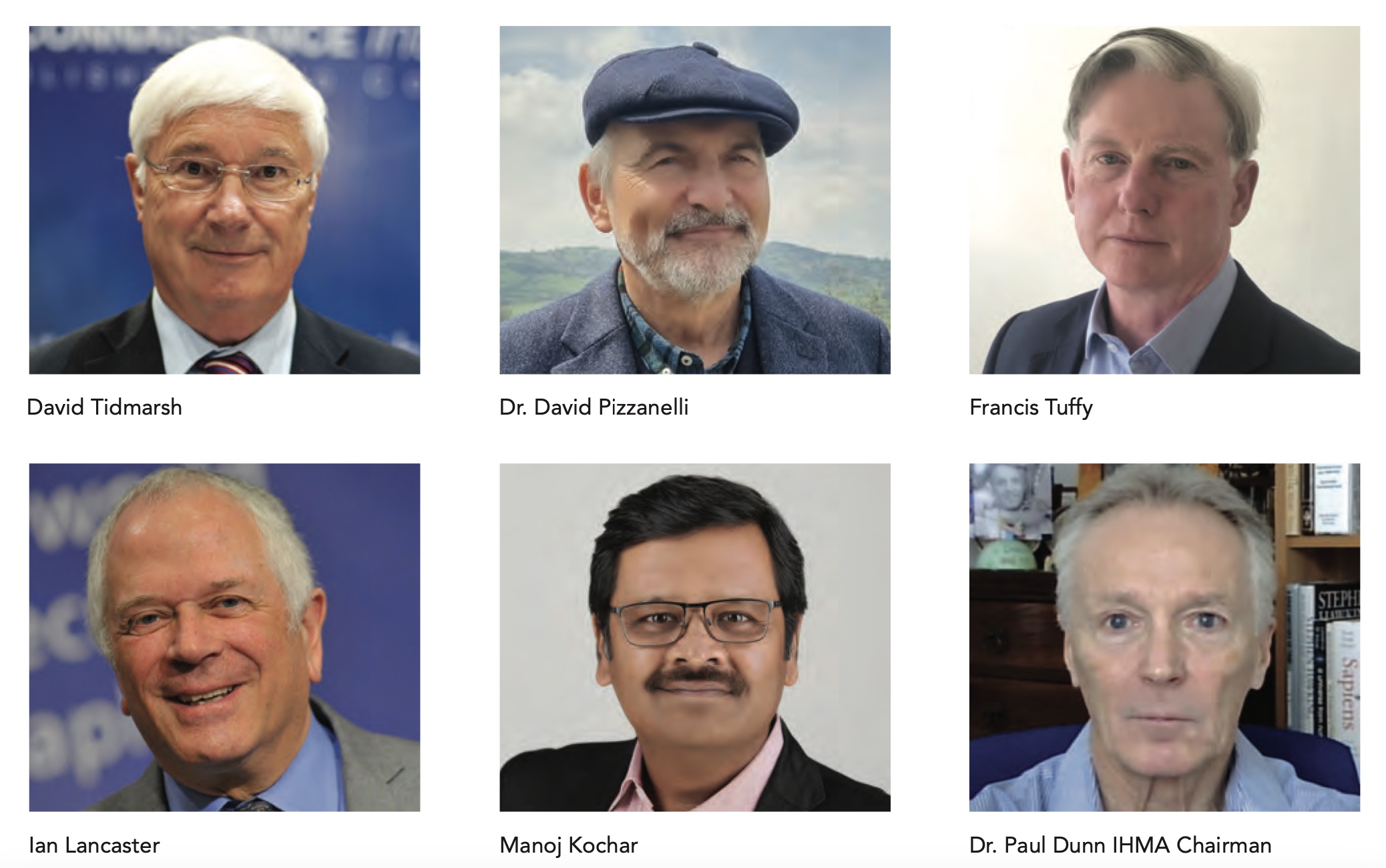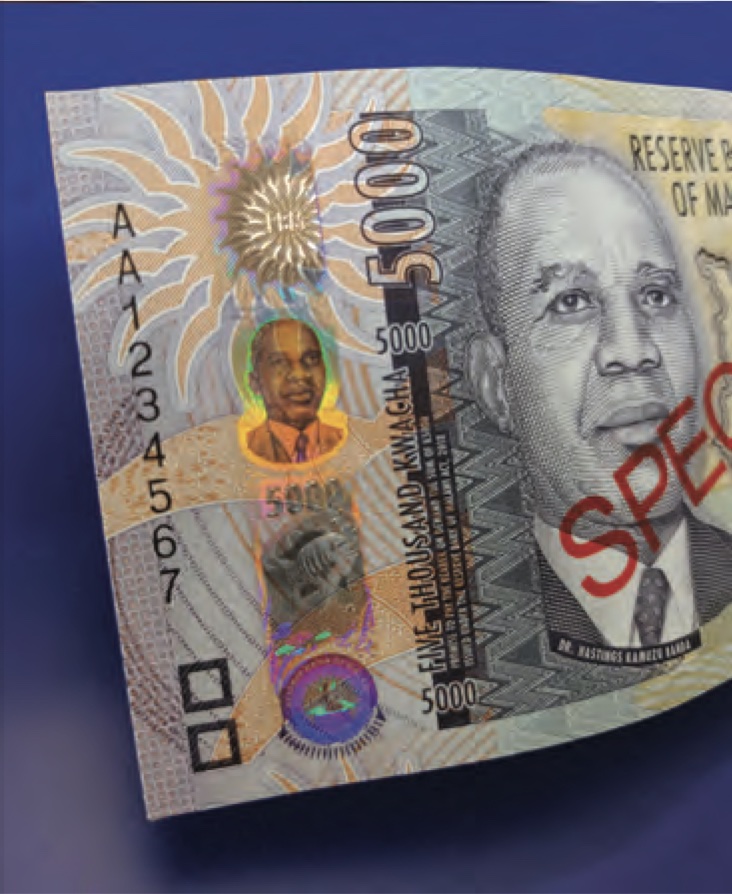The IHMA: Driving 30 Years of Hologram Growth
- Published: October 09, 2023
Established in 1993, the International Hologram Manufacturers Association (IHMA) has evolved into a global voice on authentication and security devices. Now, five former chairs — and one general secretary — reflect on 30 years of holography growth while offering a glimpse of an exciting future for the technology.
What do you see as the key ups (and downs) of holography over the last 30 years?

David Tidmarsh (DT), first chair, 1993 – 1995: Despite the potential of holography as a security feature following its role on payment cards, convincing companies to adopt holograms for security was tough because holography was expanding rapidly in retail packaging and stationery, and many felt it lacked security credentials (unique, scarce, tightly controlled, etc). The two defining events which changed this negative perception was the establishment of the IHMA Hologram Image Register and the adoption of holograms by the European Central Bank for the first euro banknote series.
Dr. David Pizzanelli (DP) chair, 1995 – 1998: The 1980s saw a surge of pioneering companies racing to create a brand-new business out of embossed holograms; first came 3-D display holograms and just a few months later ‘2D-3-D’ promotional stickers with their dazzling rainbow diffractive colors. The 1990s saw the rise of small holograms used for brand protection on a wide range of products, such as tea, coffee and cigarettes. As the technology became more widely disseminated the security value diminished and the industry became more consolidated; however, the innovative technology of embossed holograms and diffraction gratings is still flourishing today.
Francis Tuffy (FT), chair, 1998 – 2000: When the IHMA was formed, the industry had
gone through an amazing growth spurt taking it from the laboratory, through gallery and museum exhibitions to partial acceptance as a visual tool for packaging, marketing and security. Today, holography is routinely used in all three of these application sectors.
Ian Lancaster (IL), general secretary of the IHMA, 1993- 2015: Adoption and continuing use of holograms on the euro, increased use of holographic optical elements (HOE) in lighting, head-up displays (HUD) and the simplification of origination using computer systems have definitely been ups. When it comes to downs, the failure of display holography to make a discernible impact in the visual world — advertising and promotion, decorative, medical imaging etc. — has been disappointing. The confusing misuse of ‘hologram’ and ‘holography’ to describe updated Pepper’s Ghost and similar effects must also be addressed.
Manoj Kochar (MK), chair 2016 – 2018: To my mind, the key to the growth of the industry has been the application of holograms on banknotes, identity documents such as passports and visas, and also credit cards. These applications were a huge endorsement to the hologram as a protector against counterfeiting. This led to further adoption across various other sectors. The widespread proliferation of the technology in markets like India and China have also contributed enormously to the overall growth of the industry. Advancements in origination and mass replication technologies have ensured that the industry has kept pace with the growing demand for larger volumes as also the innovations in optical features.
Paul Dunn (PD), chair 2019 – present: The growth in related technologies and market acceptance of holography has been a very positive factor over the past 30 years, particularly in security and packaging applications. In anti-counterfeit and authentication applications, holography has played a leading role over this time period. In contrast, display and holographic art has not experienced the same growth as materials and facility costs are high and opportunities are limited for new holographers. New applications for display technologies are emerging but time will tell how well these will fare.
What obstacles must be overcome to secure future growth?
 DT: In security, the emergence of new security features. We have already seen this with the emergence of micro-optics lens and plasmon-based features. In time, counterfeiters find ways to mimic even high technology security features, so new technologies do evolve. And the use of physical documents for security is declining as digital technologies evolve. The use of holograms in packaging, stationery and display however, would appear to have more resilience in the medium to long term.
DT: In security, the emergence of new security features. We have already seen this with the emergence of micro-optics lens and plasmon-based features. In time, counterfeiters find ways to mimic even high technology security features, so new technologies do evolve. And the use of physical documents for security is declining as digital technologies evolve. The use of holograms in packaging, stationery and display however, would appear to have more resilience in the medium to long term.
DP: Embossed holography has long lead-times and expensive tooling costs, but when compared to ink-based printing, embossed diffractive structures are amazingly versatile, providing multi-color images in a single pass, from a color photograph in diffractive hues, to 3-D images with parallax, even short video portraits. Features such as kinetic guilloche patterns can be combined with micro-text down to the sub-micron level. Combined with light-sensitive photopolymers, volume holograms, micro-lenticulars and fly’s-eye arrays, can be created. Different structures provide a myriad different optical effects and will continue to provide excellent value in the future.
FT: Cost has to be considered as a limiting factor to the growth of holography, as although we have seen production efficiencies over the past 30 years, it is still a relatively expensive option in many applications.
IL: Lighting (for display holograms) and cost.
MK: Over the years the hologram has obviously lost its novelty value, but the industry needs to create a new generation of optical effects and color control technologies to keep the technology interesting and unique. And with the constant cost pressures, such developments need to be priced optimally.
PD: Over the years, alternative optical technologies have started to emerge to challenge holograms in both display applications and in particular, security applications. Light Field display systems, using a multiple lens technology called Integral Imaging, are making significant inroads to display applications such as advertising, medical imaging and educational applications. Together with large-format projections and Peppers Ghost, they form a body of 3D imaging methods they call holography, but these technologies have no basis in true holography.
Perhaps more significant are the optical technologies emerging in the security applications to rival holograms. Optical technologies such as micro-lenses, micro-mirrors and plasmonics, are examples of developing technologies already in use today, with other developments in progress. Although perceived as obstacles to hologram growth, the challenge for the hologram manufacturers is to assess if these are true obstacles or opportunities to work together to provide even greater security. High material and facility costs will remain an obstacle for the holographic art and display market.
How should the IHMA position itself for the next 30 years to meet the changing needs of its members and the wider industry?
 DT: The initial requirement of the IHMA to put holography on the global map, in particular in the security, packaging and stationery industries, has been achieved. But these are now mature markets so there is need for change if membership has peaked. In security the word “hologram” has largely been replaced by “diffractive feature”
DT: The initial requirement of the IHMA to put holography on the global map, in particular in the security, packaging and stationery industries, has been achieved. But these are now mature markets so there is need for change if membership has peaked. In security the word “hologram” has largely been replaced by “diffractive feature”
as this embraces more technologies and companies. Are there other light-based technologies that could benefit from joining an association? I would suggest that
a work group is formed with the specific objective of identifying potential technologies, industries and/or organizations that could benefit from membership of a mature and well-managed association. The name IHMA should not inhibit the research — a new name could mean new life.
DP: Over the last 30 years the word “hologram” has been broadened to include a whole range of different visual effects and almost every type of 3-D projection system, from Pepper’s Ghosts to Virtual Reality viewers. Holographers no longer have ownership of the term “hologram” and the IHMA may have to open its membership to companies making novel imaging devices that the general public accepts as holograms in order to adapt to the wider industry.
FT: The industrial sectors that use holography are shifting. Medical imaging, VR headsets, Holopresence and large-format displays are just some of the areas that are seeing the advantages of diffractive over refractive optics. The IHMA should look to expand its membership beyond traditional hologram manufacturers to include these sectors.
IL: I agree with Francis on this one. The IHMA needs a wider remit — more outward looking than ever before. Part of the IHMA’s mission is... encouraging the understanding, use and development of holograms and holographic technology. While implementing this is currently a challenge, it is necessary for the growth and continuing role of the organization.
MK: The IHMA should also perhaps expand its presence to the authentication segment whereby the other authentication technologies are also invited to the IHMA platform to promote collaboration with the security hologram industry and develop new solutions to meet the changing needs of the marketplace. Besides security and decoration, the hologram also finds use in projection, display and imaging, data storage. These applications are set to grow and the IHMA must make an effort to bring such technologies within its fold so that it truly remains the global voice of the hologram technology.
PD: It is certainly changes to the wider industry that has taken the focus of the IHMA board recently. The introduction of an increasing number of non-holographic optical security technologies and new display and stage concepts that question the definition of the term “holography,” are challenges we need to face. The next update to the Hologram Image Register, already in planning, is to broaden the range of optical security features to include new non-holographic technologies. All these factors have a clear implication to the International Hologram Manufacturers Association name itself. Will we need to change the name of the Association? Most likely. The Board is already looking to expand the association membership to a wider range of manufacturers and markets beyond the traditional hologram manufacturers and looking to introduce a new range of support and services to ensure value to members. If we want to be an effective association to current and new members markets, further and significant changes will need to be made.
About the Author
The IHMA (www.ihma.org) is made up of more than 80 of the world’s leading hologram companies. Members include the leading producers and converters of holograms for banknote security, anti-counterfeiting, brand protection, packaging, graphics and other commercial applications around the world, actively cooperating to maintain the highest professional, security and quality standards.




